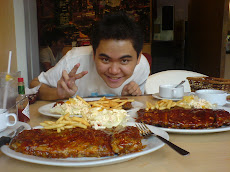In the recent years, we have been trying to put the brakes on the act of unethical abuse of somebody else’s work in particular, the research field. The area of ethics could be considered a guide to separate right and wrong, good or evil. So, how do we as a researcher predict and hence minimize the abuse of our work?
I would predict the immoral use of my work by considering questions such as “Who will be targeted with my new research?”, “Can it be done to them?”, and “If it can be done, how can it be done in a right way?”. These are paramount questions that I would ask myself so that I have a clear picture of what to expect from the society when my work is being published. Moreover, I would conduct a survey to address the public and legal advisors to determine the acceptability of my research. For example, if I have done researches on brain mapping, which are personal information’s about a person’s mental health, how are these information’s being used and who will exercise it? In addition, if an employer uses the brain information and discovers that something is not right with the employee. Does this reduce the chance of the employee of seizing the job? Should it be a must for all employees to disclose their personal brain scan since it is a private and confidential information?
In order to minimize the unprincipled abuse of my work, a few items must be noted. Firstly, strict and practical rules and regulations are to be set on what is ready to be used in the marketplace and why not (Marano, 2003). This is to ensure that nobody goes beyond the boundary of misuse of technology for example, using brain scans to grade a person on his/her abilities. Secondly, is that my work must be patented and application could be done through the proper channel for example in Singapore, researchers can patent their findings through PatentArea.com (http://www.patentarea.com/singapore_patent_requirements.html) where all the guidelines are provided.
To conclude, protecting my research from unethical abuses is a rather tough thing to do however; it must be done in order to protect the rights of everyone from all walks of life. Ethical, legal and social implications must be considered from all angles so as minimal problem would arise from my research done.
References:
-National Science Foundation (2008 May 30) A computer that can ‘read’ your mind. Retrieved August 6, 2008.
-Marano L. (2003 June 3) Ethics and mapping the brain. Retrieved November 7, 2008 from Center for Cognitive Liberty & Ethics. Web site: http://www.cognitiveliberty.org/neuro/brain_mapping_ethics.htm